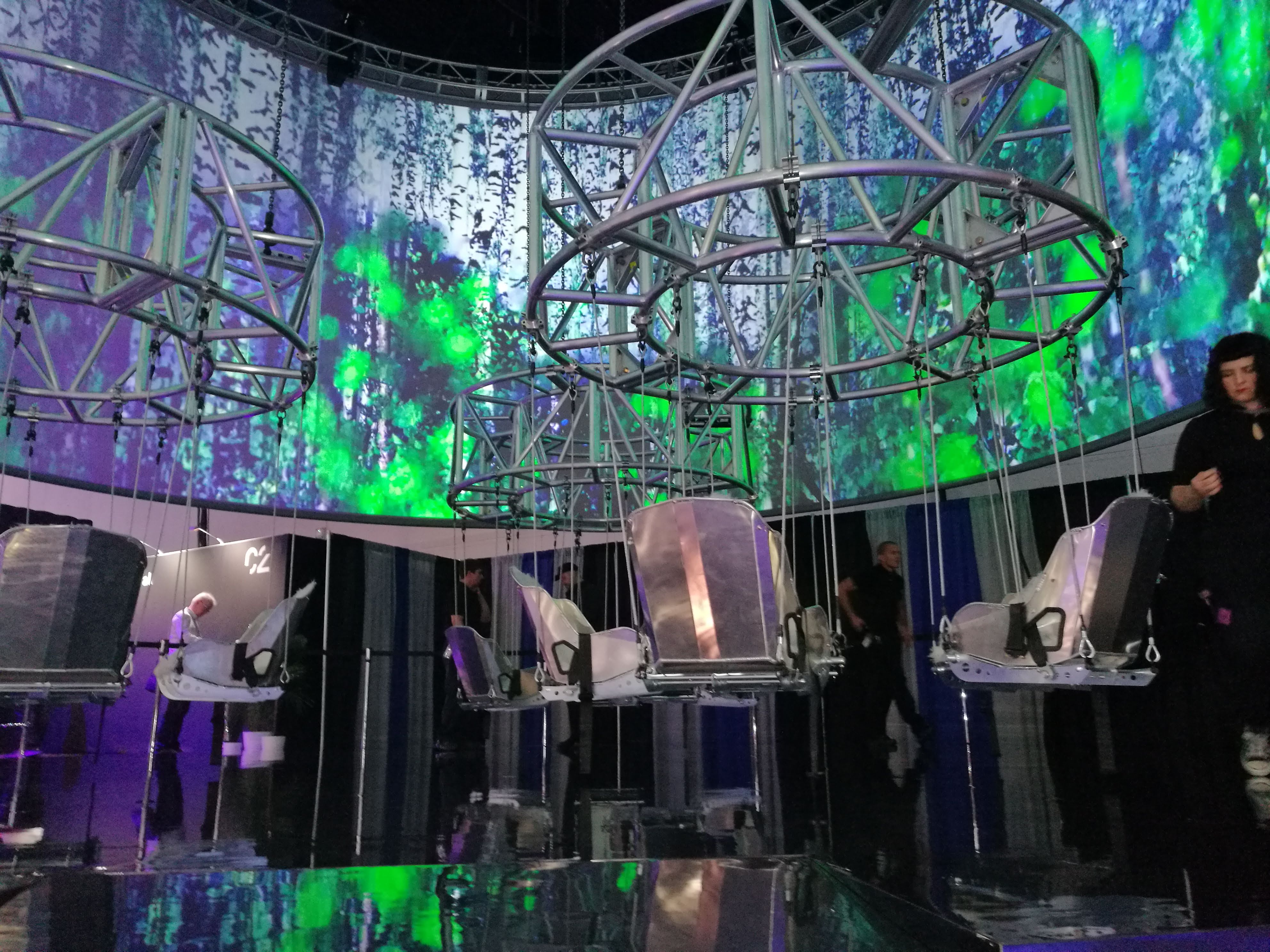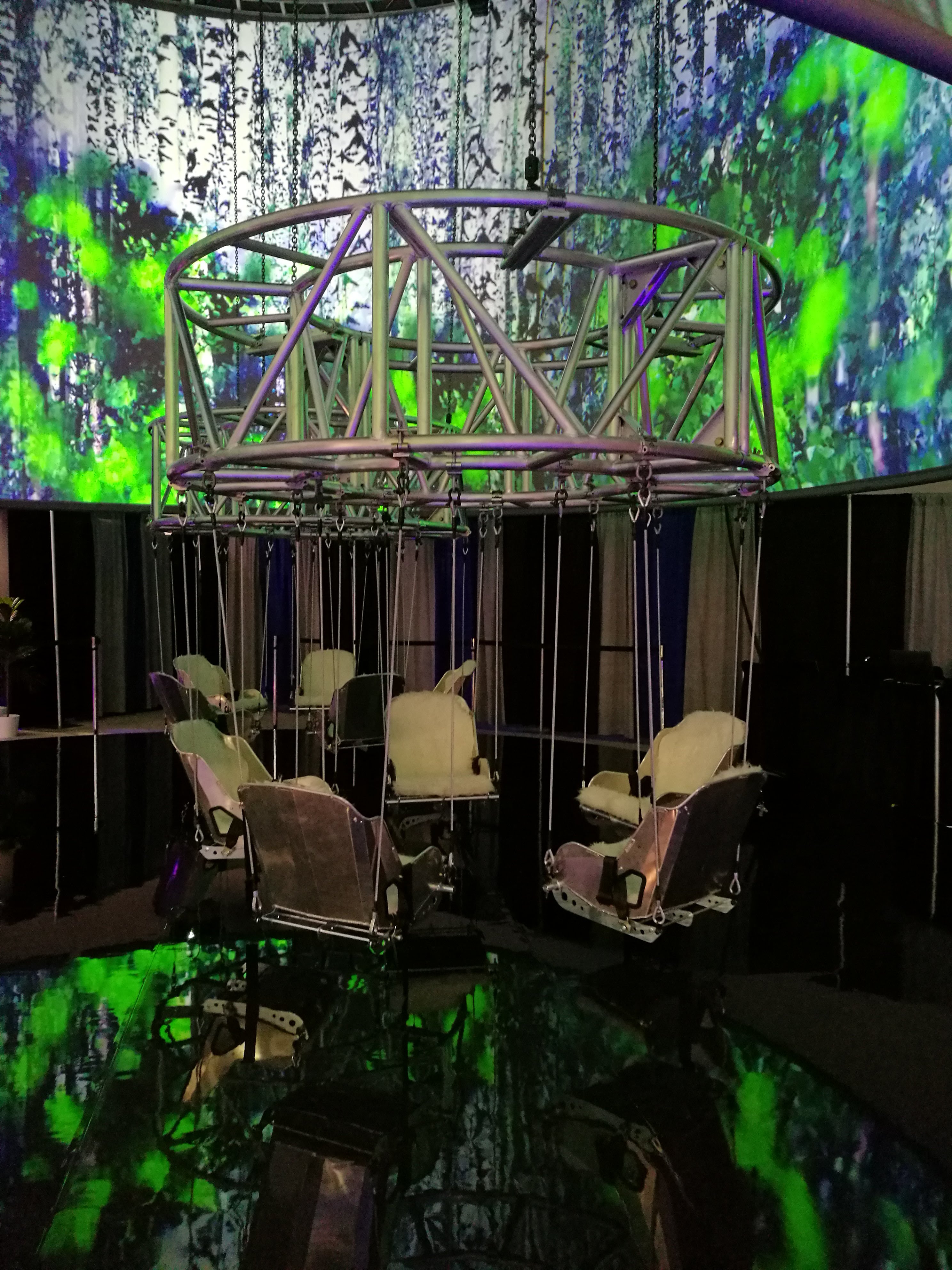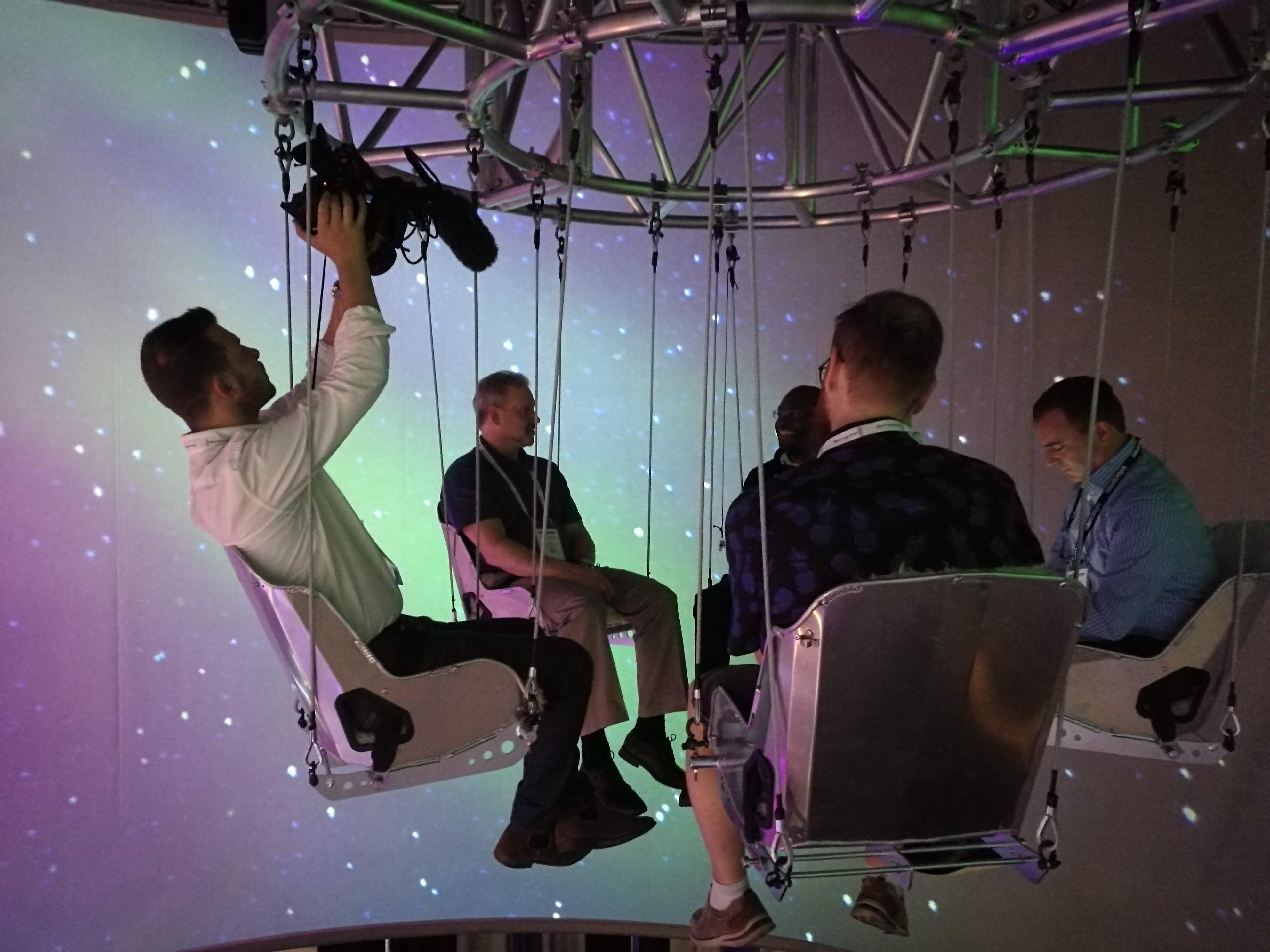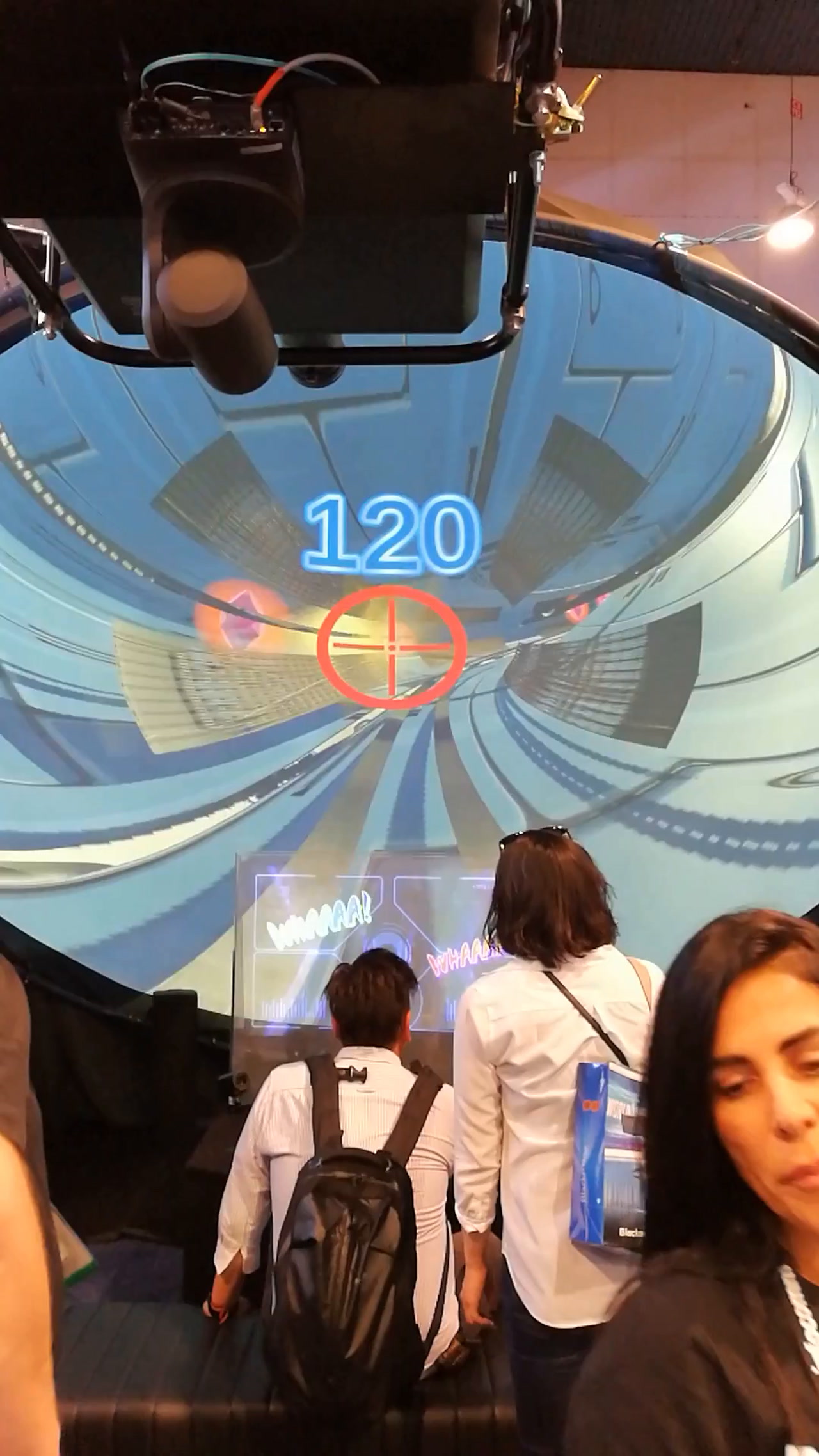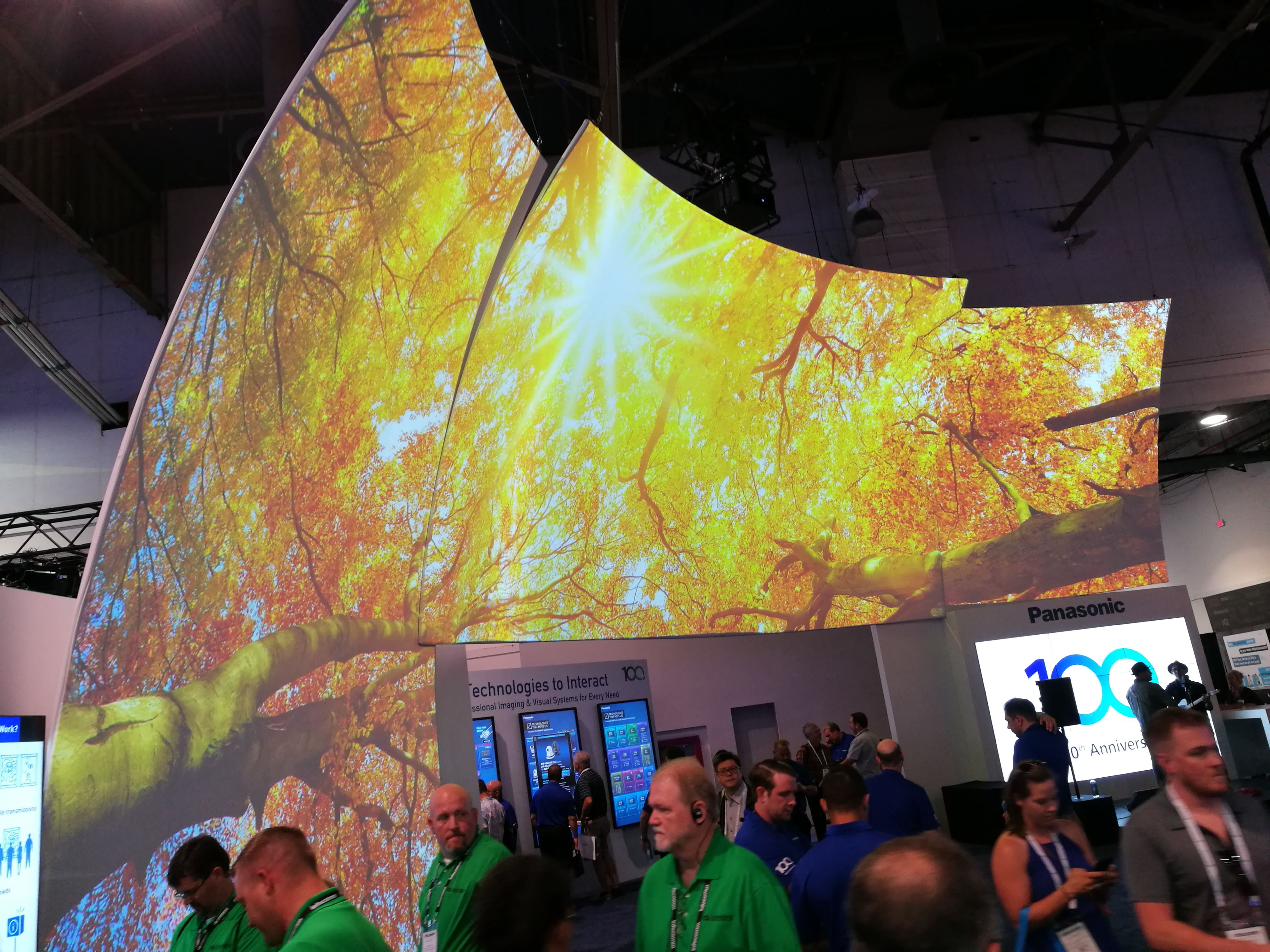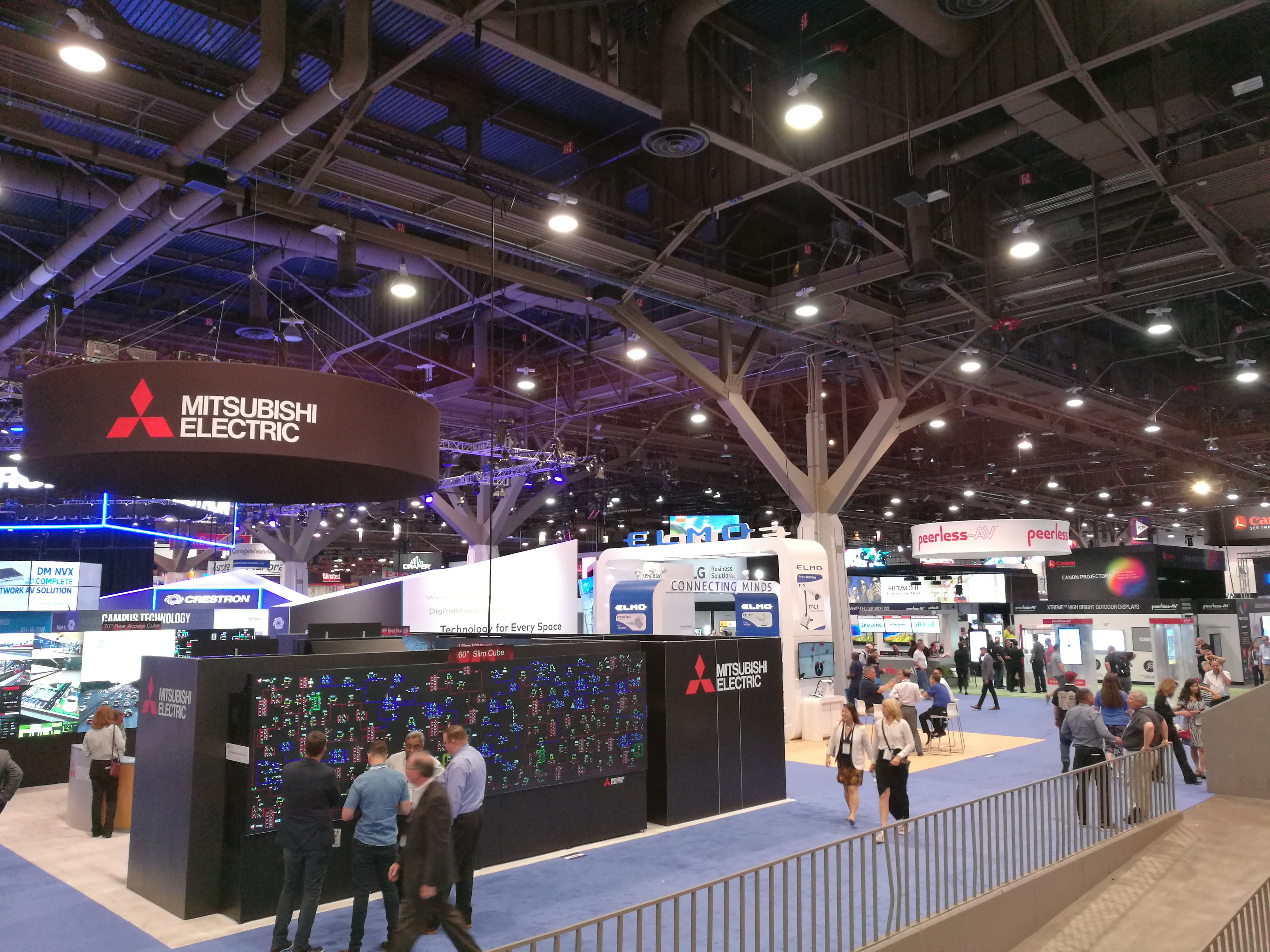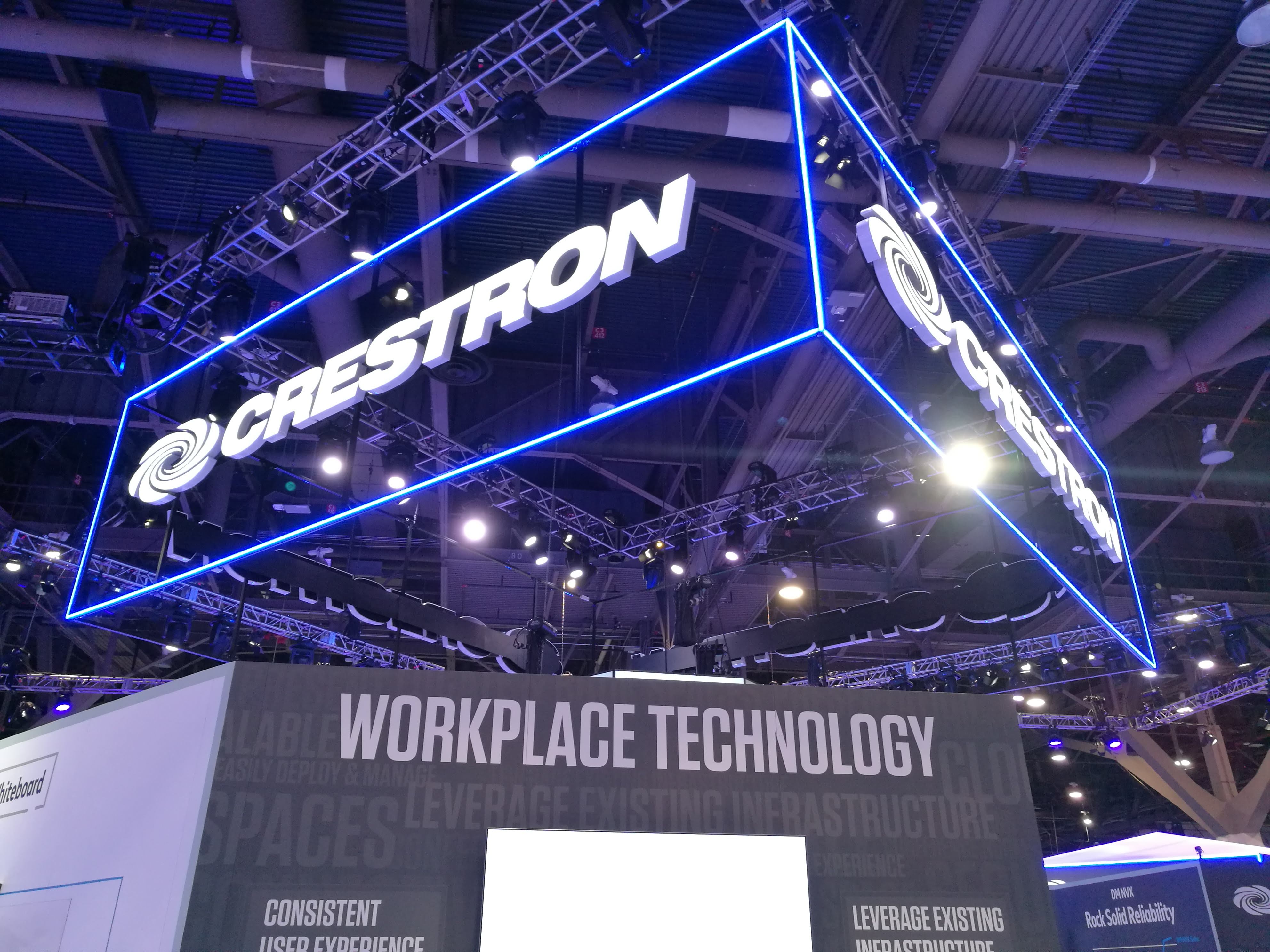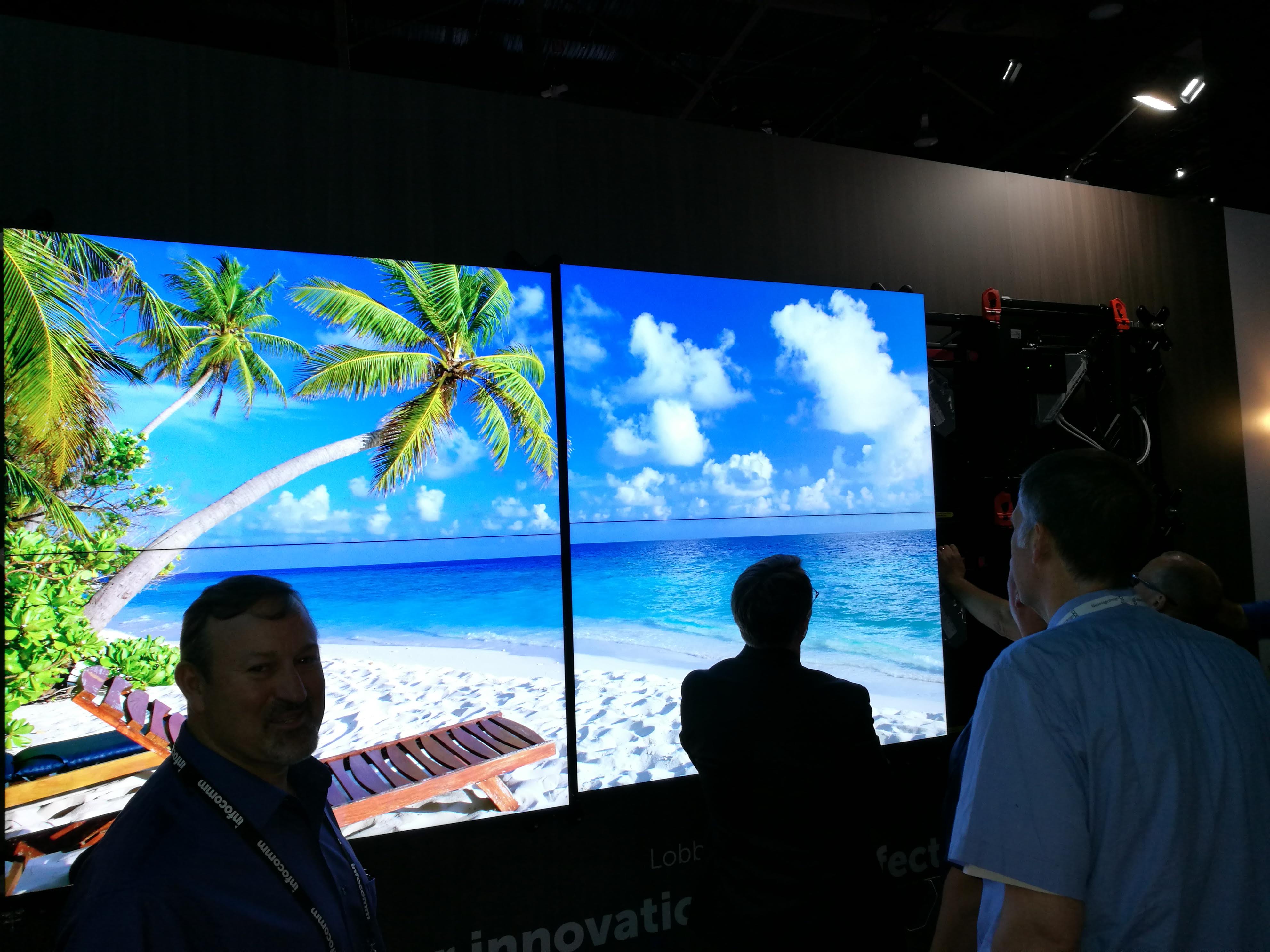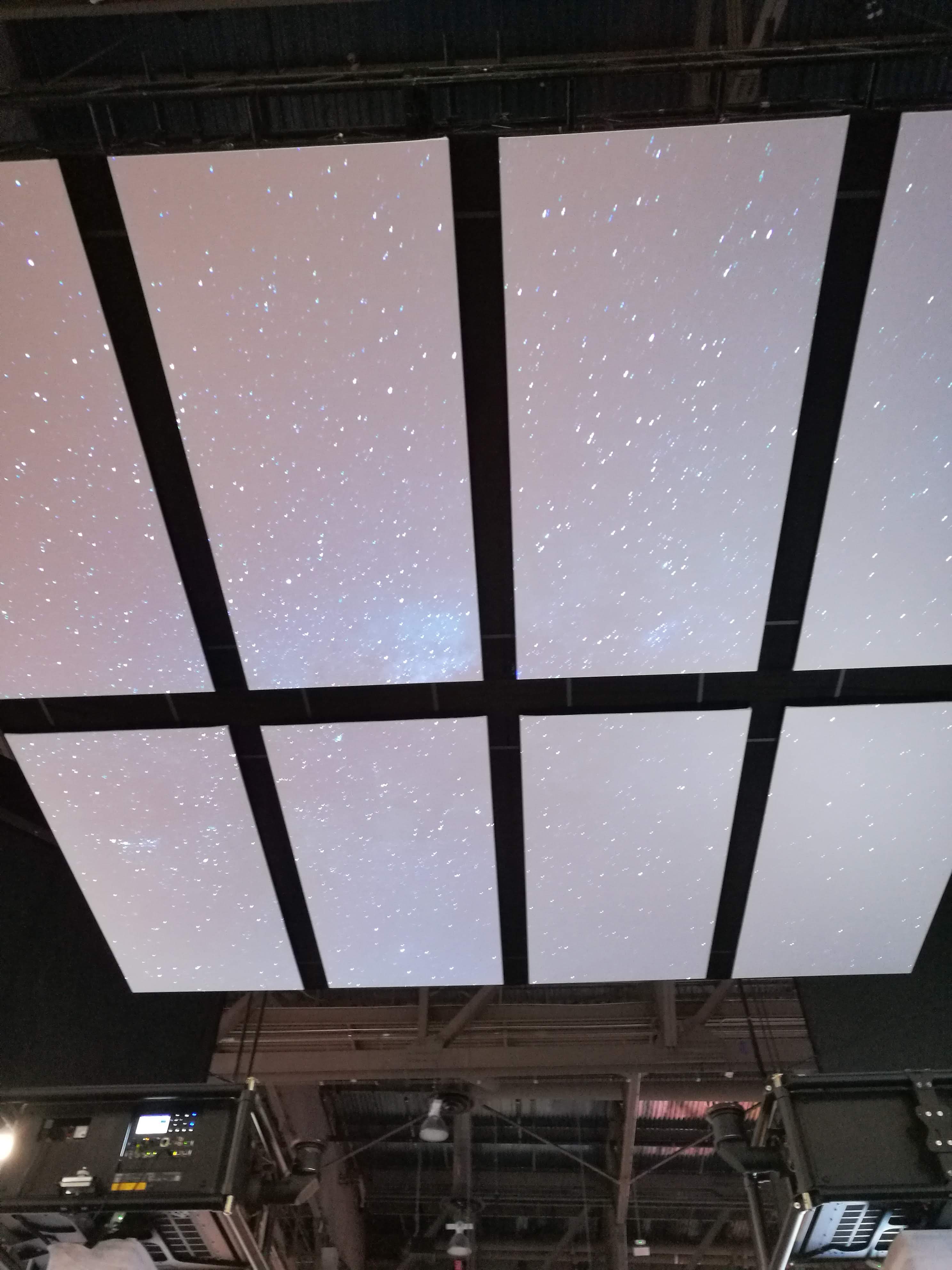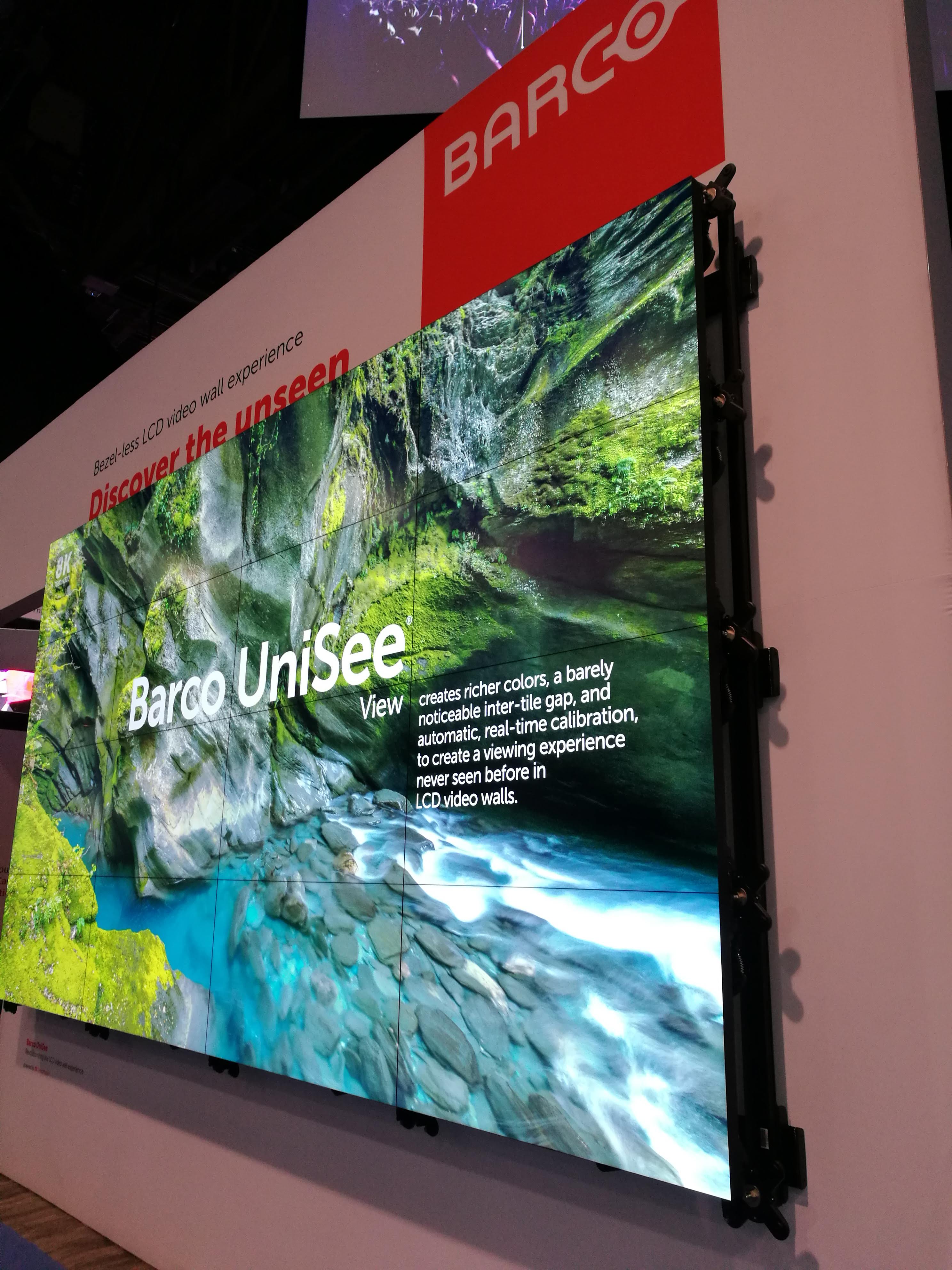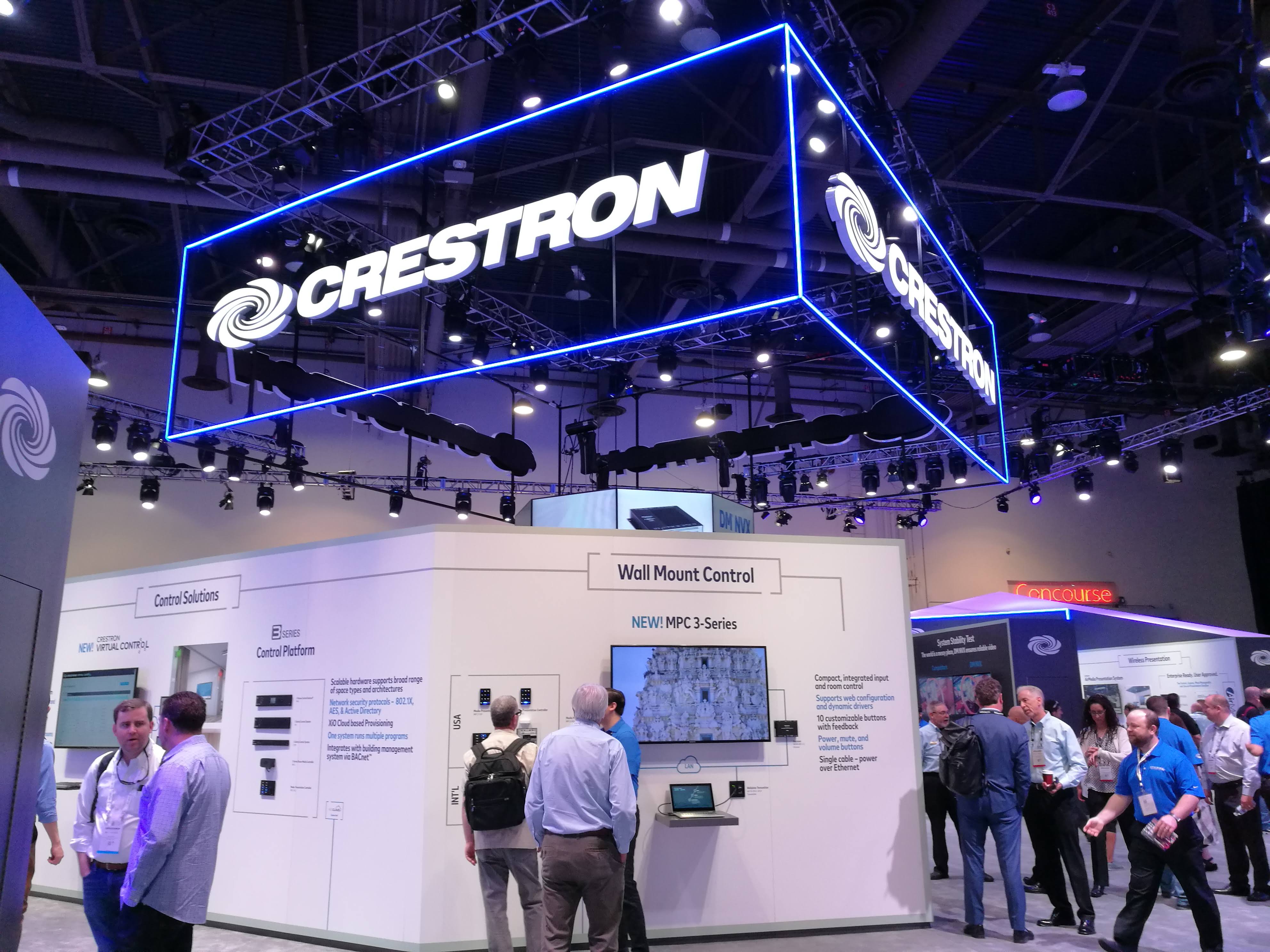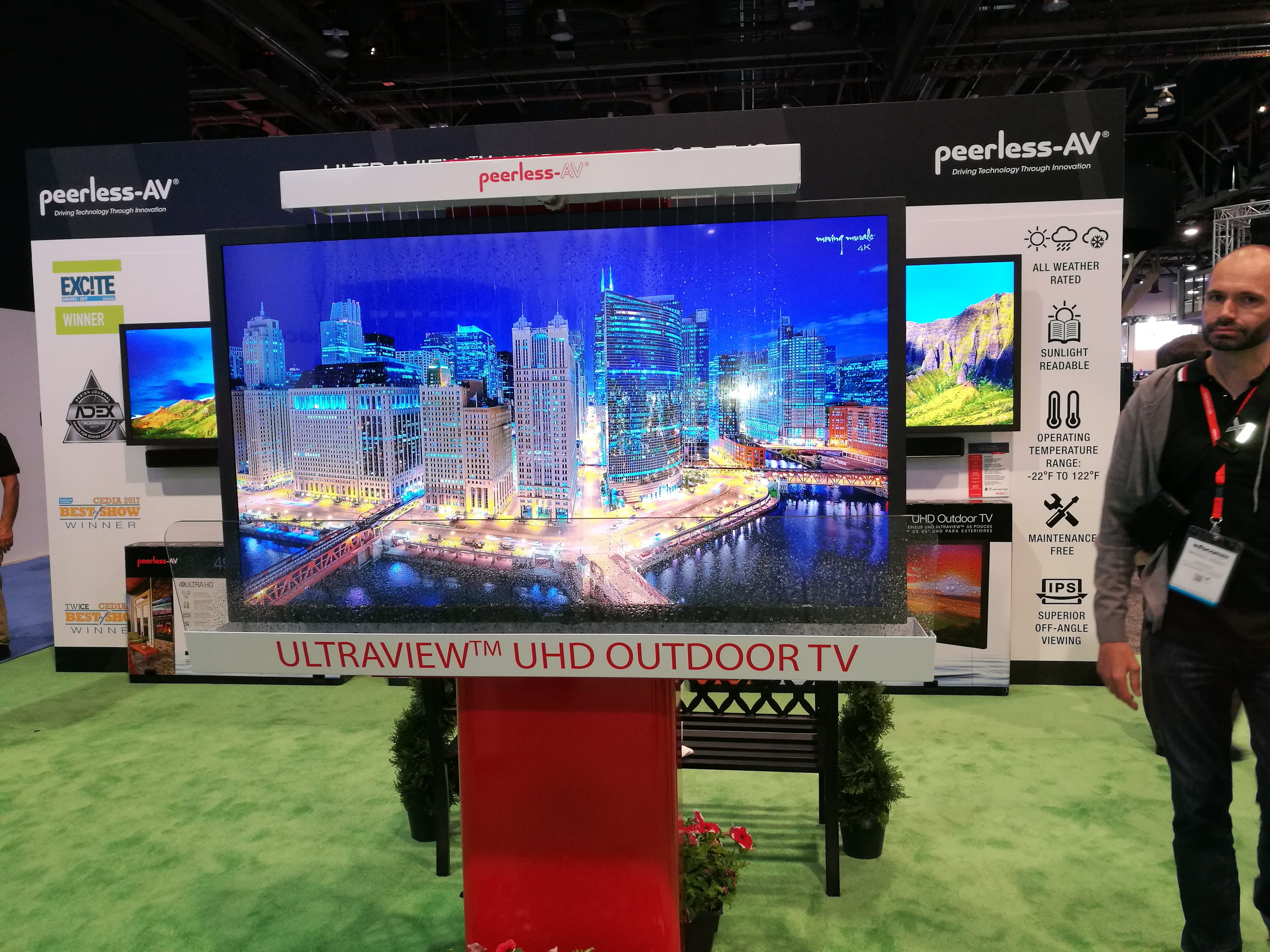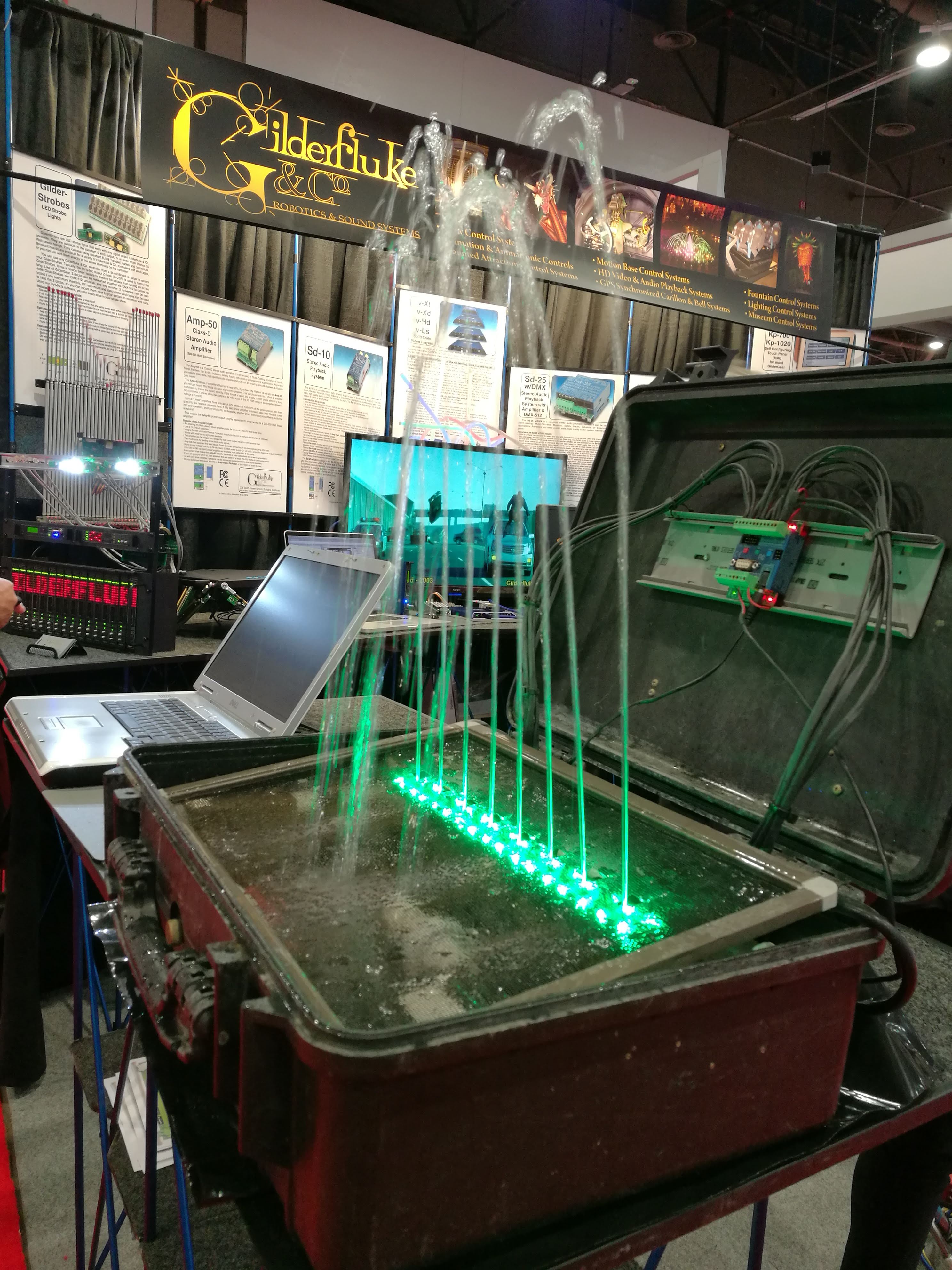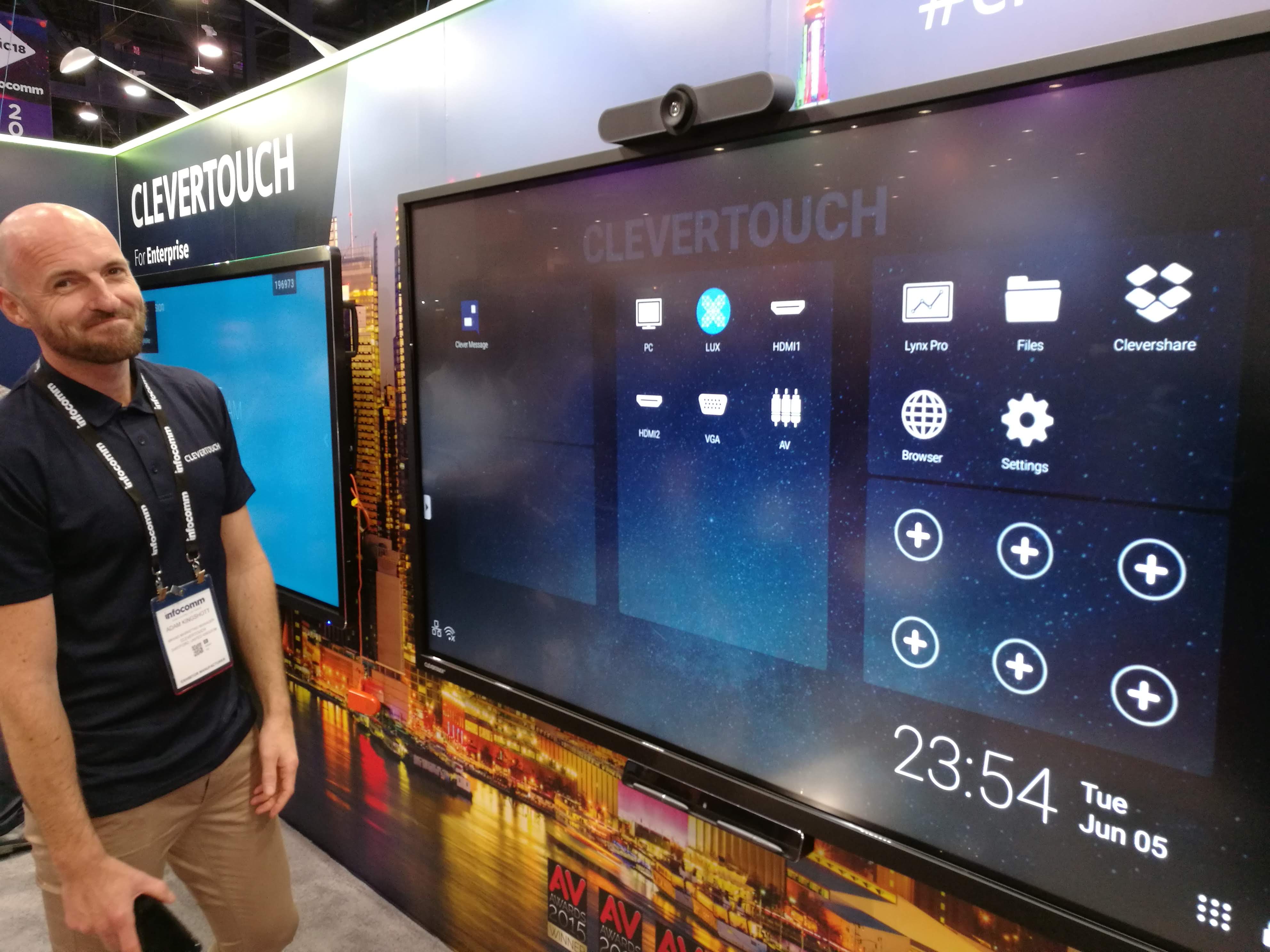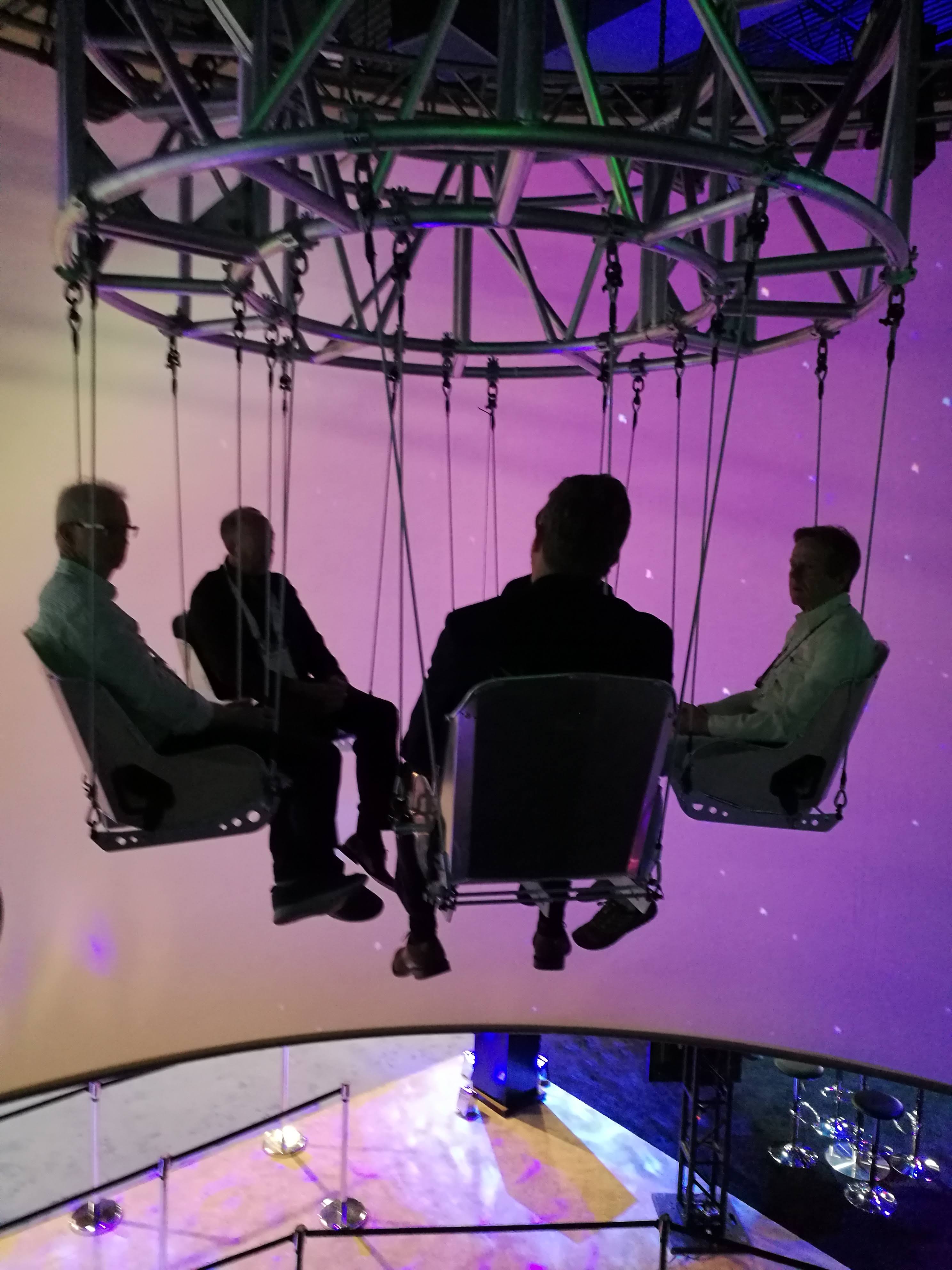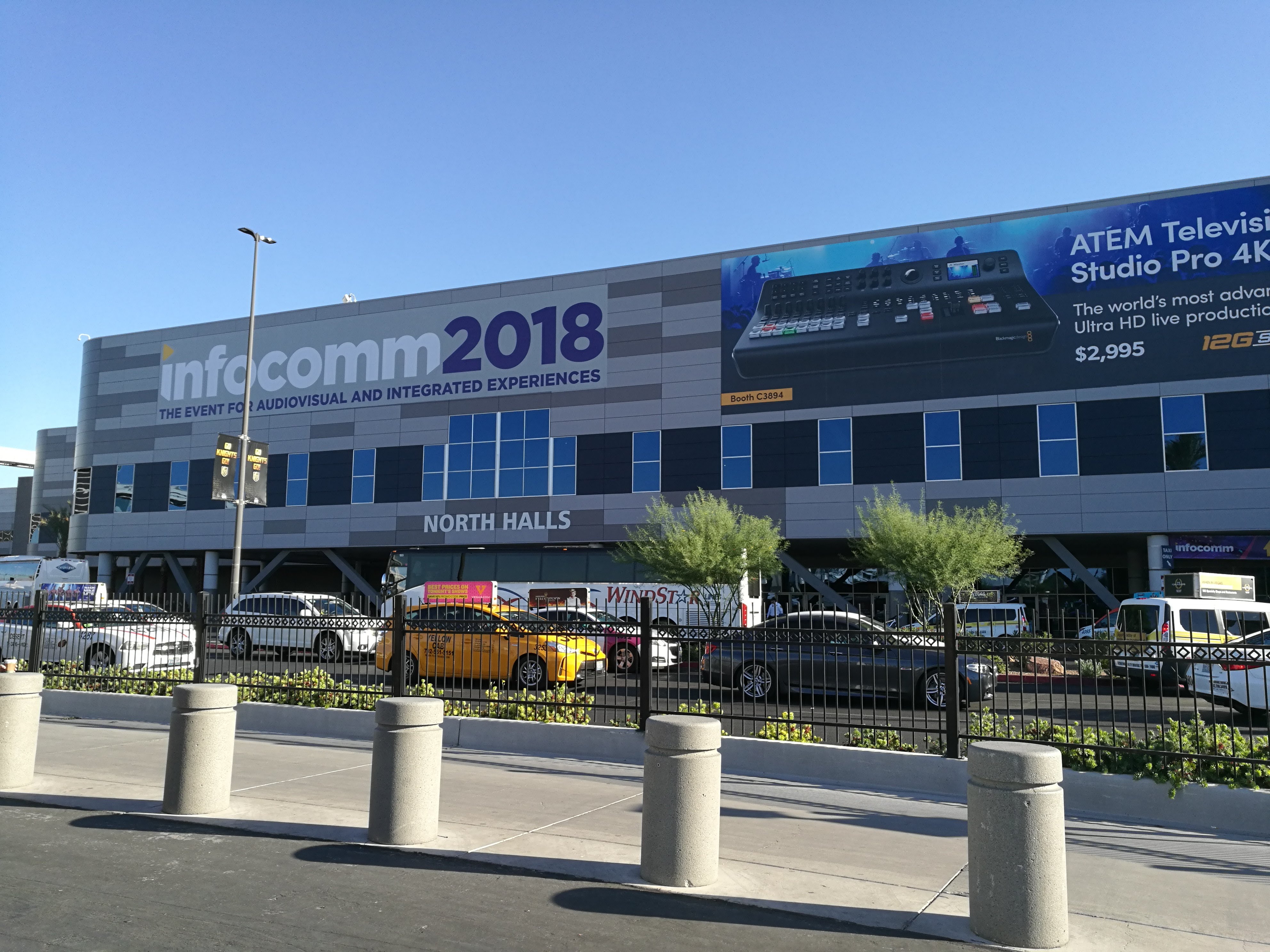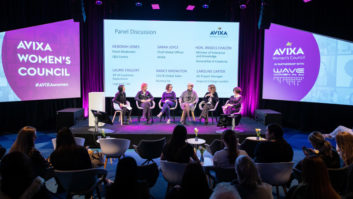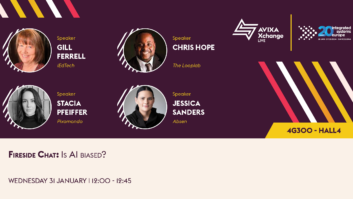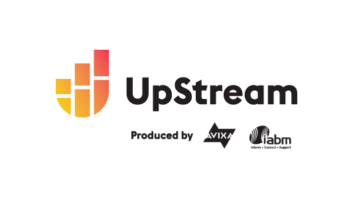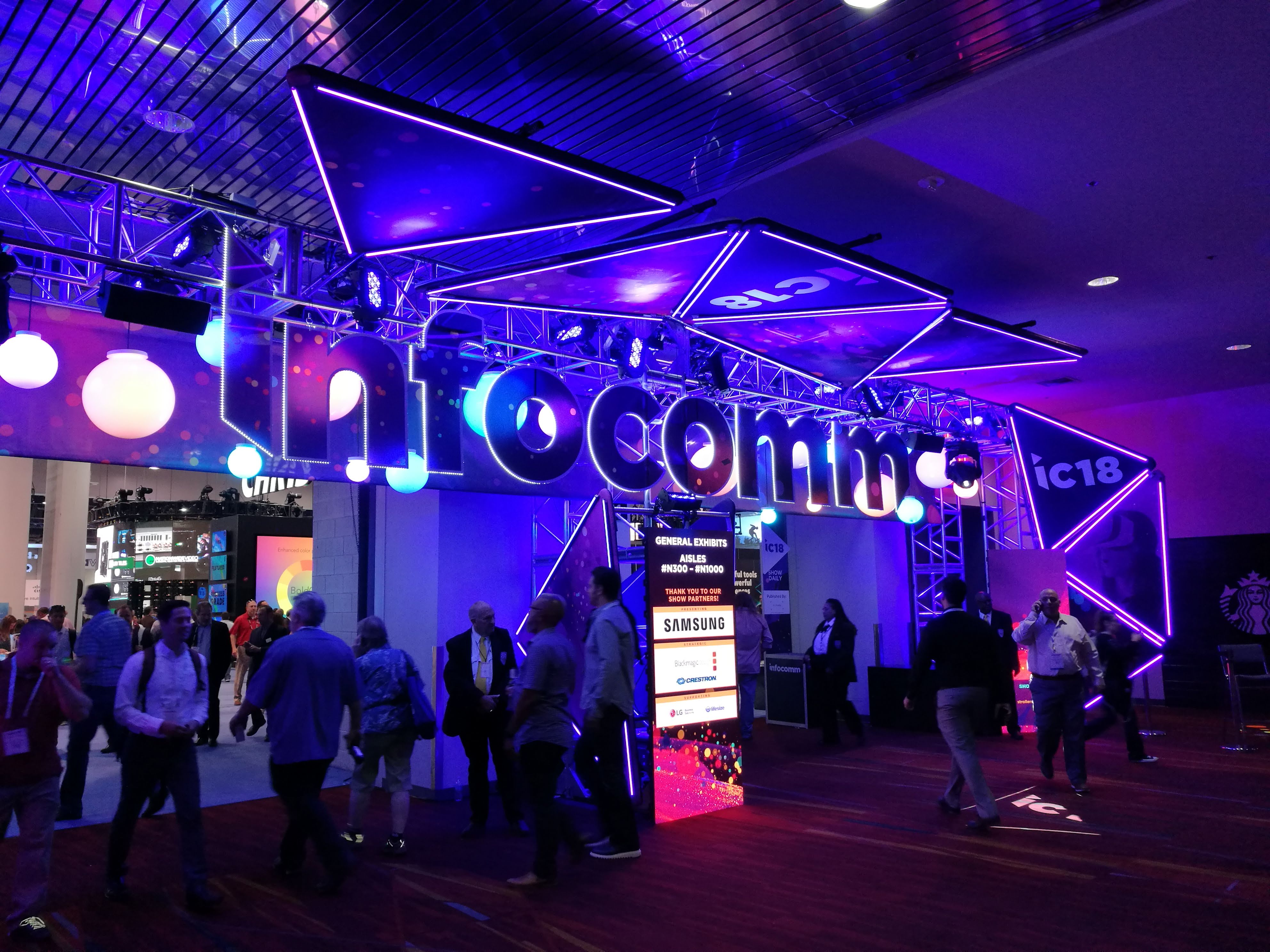
AVIXA CEO David Labuskes has lauded the 2018 instalment of InfoComm (June 8-11) as its “biggest” and “greatest” to date, providing more value and more opportunities for attendees and exhibitors alike.
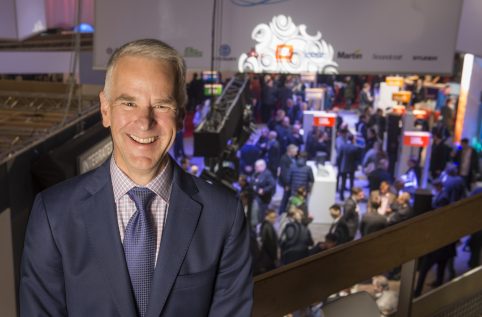
The show, which switches to Orlando in 2019 before arriving back in Vegas a year later, smashed all previous records, with exhibitor numbers close to 1,000 and more than 44,000 attendees. 41 per cent of those were end users, up 10 per cent (compared to previous Vegas show in 2016).
In an exclusive interview, Labuskes – who has sat in the top seat at AVIXA (formerly InfoComm International) since 2012 – spoke to AVTE about some of the positive changes made to this year’s show following its transition to AVIXA last year, all of which were designed explicitly to provide greater value to all that attend.
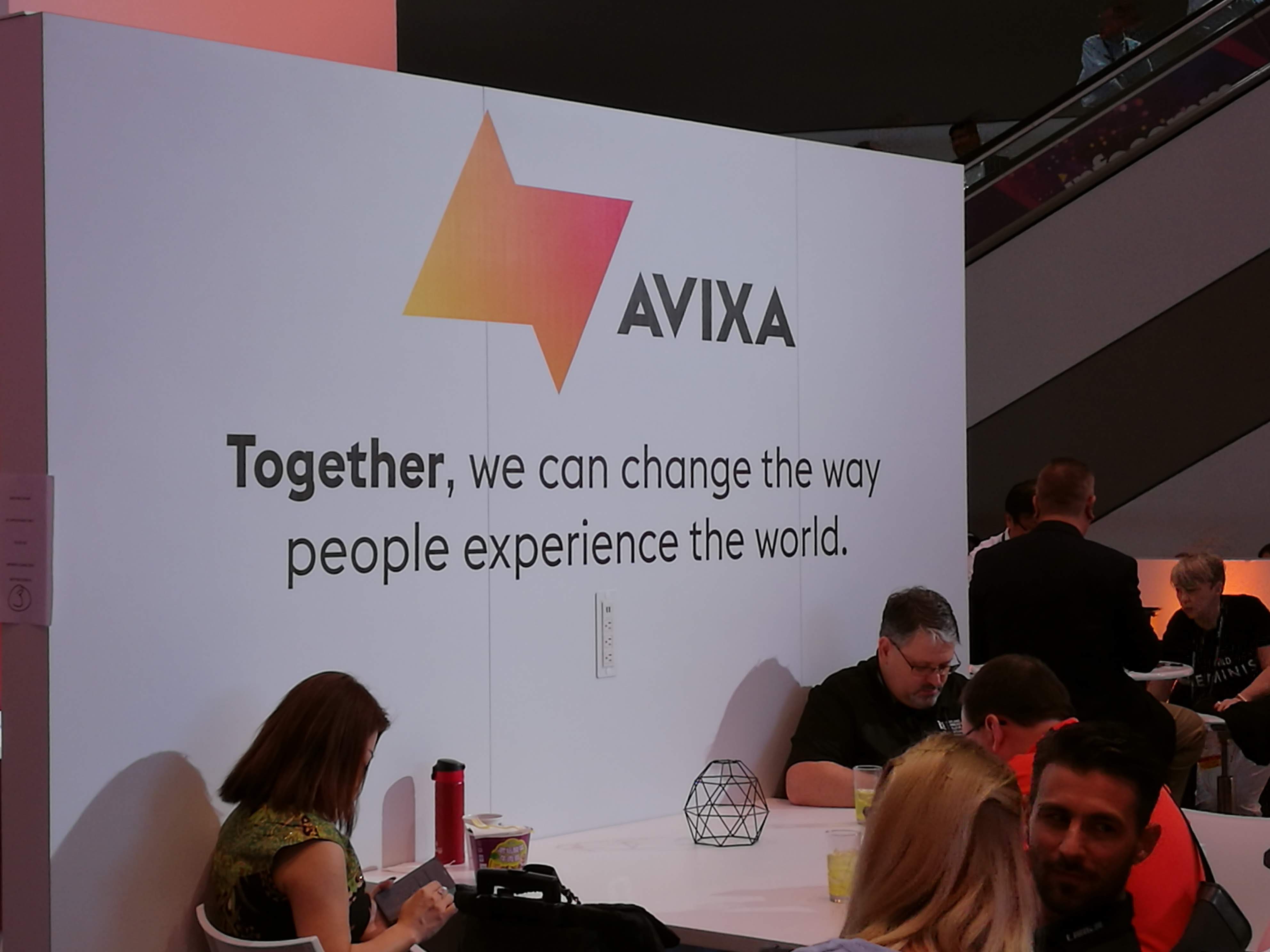
He also gives us a taste of what to expect at InfoComm 2019 in Orlando and explains why its vitally important for attendees to attend both ISE (Amsterdam, Europe) and InfoComm in order to maximise their knowledge, awareness and opportunities from within the industry.
Hi David. It’s been a few weeks now since the convention centre in Vegas closed its doors on InfoComm 2018. How would asses its performance?
It’s certainly the best edition of InfoComm that I’ve ever experienced as CEO and I think it’s probably the best InfoComm we’ve ever had.
Ironically, as fate would have it, it’s really the first InfoComm that AVIXA has ever put on. I think it was an extraordinary audio visual and integrated experience. The show reflected everything about our re invented brand that I hoped it would do.
How did it compare to previous InfoComm instalments?
For me, I saw an enormous uplift in energy and excitement of everyone there. There was a frenetic buzz throughout the crowd, throughout the week. There was also a major change in the quality of the content and the type of content we delivered. We explicitly focused on really driving the conversation of the show towards what are the outcomes and solutions that our customers demand from us. I loved being the CEO of InfoComm, but the job and opportunity of being the CEO of AVIXA is so much more exciting. I think it showed in everything we did.
Sometimes people look for the big changes, but there were a million little things that changed this year that dramatically improved the experience for the attendees and exhibitors. The registration was painless, the bus schedule and route was improved, the quantity and quality of the catering, the seating, the AVIXA booth, there were so many.
Was there anything you’d like to improve on?
Bringing C2 and having the C2 experience was extraordinary (see picture above, video below). I’m anxious to see a greater engagement with other organisations that are focused on progressive utilisation of AV technology content and space to create experiences. We and C2 dipped our toes in the water and I’m anxious to see if we can evolve that into something bigger. I’m really excited by the positive experiences people had, and if there is one thing I’d like to do better, is to do more of that and give people the opportunity to step out the norm, truly marry experience with technology and come back with something truly memorable that they can use to enhance their offerings to their customers.
How satisfied were you with the attendance?
It was a record attendance in Vegas and a record for exhibitor space and the number of exhibitors. If I ever become complacent though, that’s the day I should step down and move on.
The greater number of people the greater the event – but you want the right people there in order to enrich the attendants experience as well as satisfy the exhibitors’ investments.
We could develop a marketing campaign that would attract 150,000 people to that show, but they would be the wrong attendees and be people that would not be bringing value from networking and shared experience and people that are not going to buy.
It’s always a balance that we have growth in the attendance but also that we have growth in the quality of the attendants. We definitely had that this year.
How popular is the show with end users?
This year, around 41 per cent of attendants were end users – so those are decision makers at the show, in many cases formulating their final decisions with regards to investments.
The last time we were in Vegas (2016), it was around 37 per cent, so we’ve seen around a 10 per cent rise. It’s about where it was last year in Orlando.
When comparing the shows, it’s important to compare like-for-like (i.e Vegas with Vegas rather than Vegas with Orlando). We have a significant percentage of our end user base in the house of worship space that will attend Orlando, but not Vegas. That happens across the board.
We also had just shy of 40 per cent first time attendees, which reflects the continued vibrancy of the show.
Is there anything you’re doing to encourage more end users?
There are probably 100 reasons why end users are drawn to InfoComm. We explicitly market to them. The exhibitors want to re-establish and reaffirm relationships with all their channel partners, but at the end of the day, the people they want to meet in a commercial environment are the people who are writing cheques and actually making purchasing decisions. Bringing those people to the show is very valuable to our exhibitors.
Likewise, it’s also valuable to our channel attendees, even those not exhibiting, because they end up sitting next to them, eating at the same table, standing having a drink at a bar afterwards. They have an opportunity to get an immediate and direct perspective from their customers or their potential customers on what they’re trying to fix or achieve when they make an investment in AV. They find out from end users what they like and dislike about their integration partners. It’s a great chance for them to learn.
A lot of end users maybe 70-80 per cent through the decision process. They’re Google-ing it, talking to their piers, listening to podcasts and viewing videos on YouTube. Getting them to the show gets them into contact with the channel earlier, which (1) allows us to refine the offering to them and (2) allows them to better understand the value we can bring to the project.
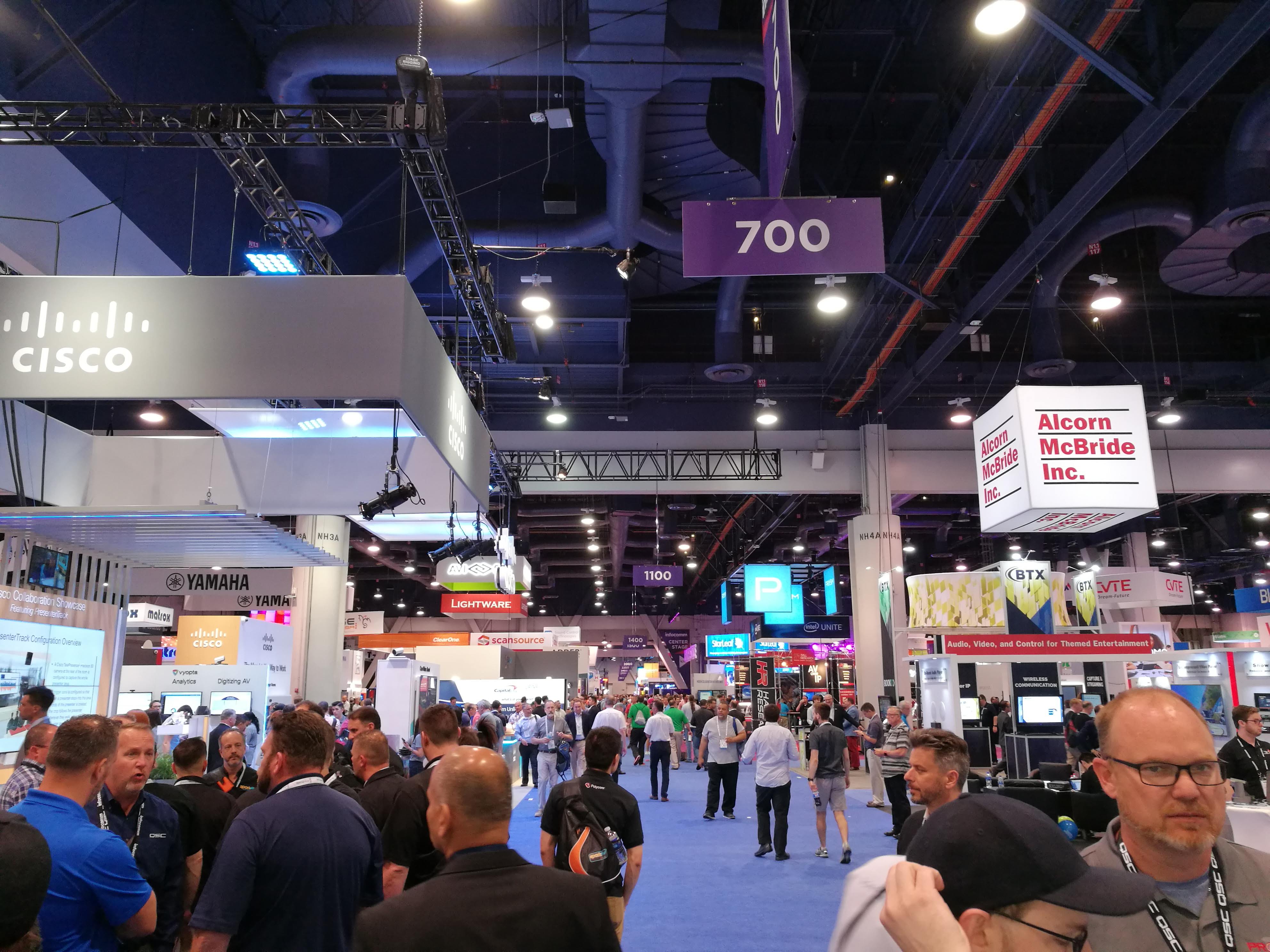
Do you have ambitions to increase end user numbers beyond 40 per cent?
I think it’s probably at its maximum. Obviously, I would like to see the absolute numbers grow, but I don’t think you can get much higher than that. I’d be happy if it did, again only if the quality was right.
If given the choice, I’d prefer numbers to remain flat and elevate quality, than grow quantity and sacrifice the quality.
Is that the same with exhibitors?
We of course would like to see that number grow, but one of the fundamental reasons that AVIXA exists, is to act as a catalyst for market growth. When you think about the tradeshow, it’s a microcosm of the market. You have consumers, the more sellers there the more vibrant that representative market is. So, yes, we want more there. But we want them to be relevant. I’m not interested in going out and getting an unrelated industry to be a part of the show.
Is there any aspect of those that attend you’d like to see any improvement on?
I’d like to see more women at the show. Numbers stayed flat at around 13.5 to 14 per cent. I think that reflects our industry, so not only would I like to see more women in that show, I’d like to see a show that is more inviting to diverse attendees and a diverse audience.
I don’t think you can make the show more appealing to women or minorities; you need to make the industry more appealing as a whole. Then the industry’s diversity will be reflected at the show. How do we do that? One thing we explicitly did was have the first meeting of the AVIXA Diversity Council, which embraces minorities, women, the LGBTQ community and looking at how we as the industry association can promote the industry to a broader population. Different viewpoints from different people from all types of background in one room will lead to more creativity – that’s critical for our industry. I’d love it to be an equal split between male and female, but I’m not going to be able to make that happen. Just because it’s a long way away, it doesn’t mean we can’t aspire to achieving that.
InfoComm and ISE are viewed as the two key AV tradeshow events of the year in Europe and the US. How do you see the two differing and are there benefits for end users to attend both?
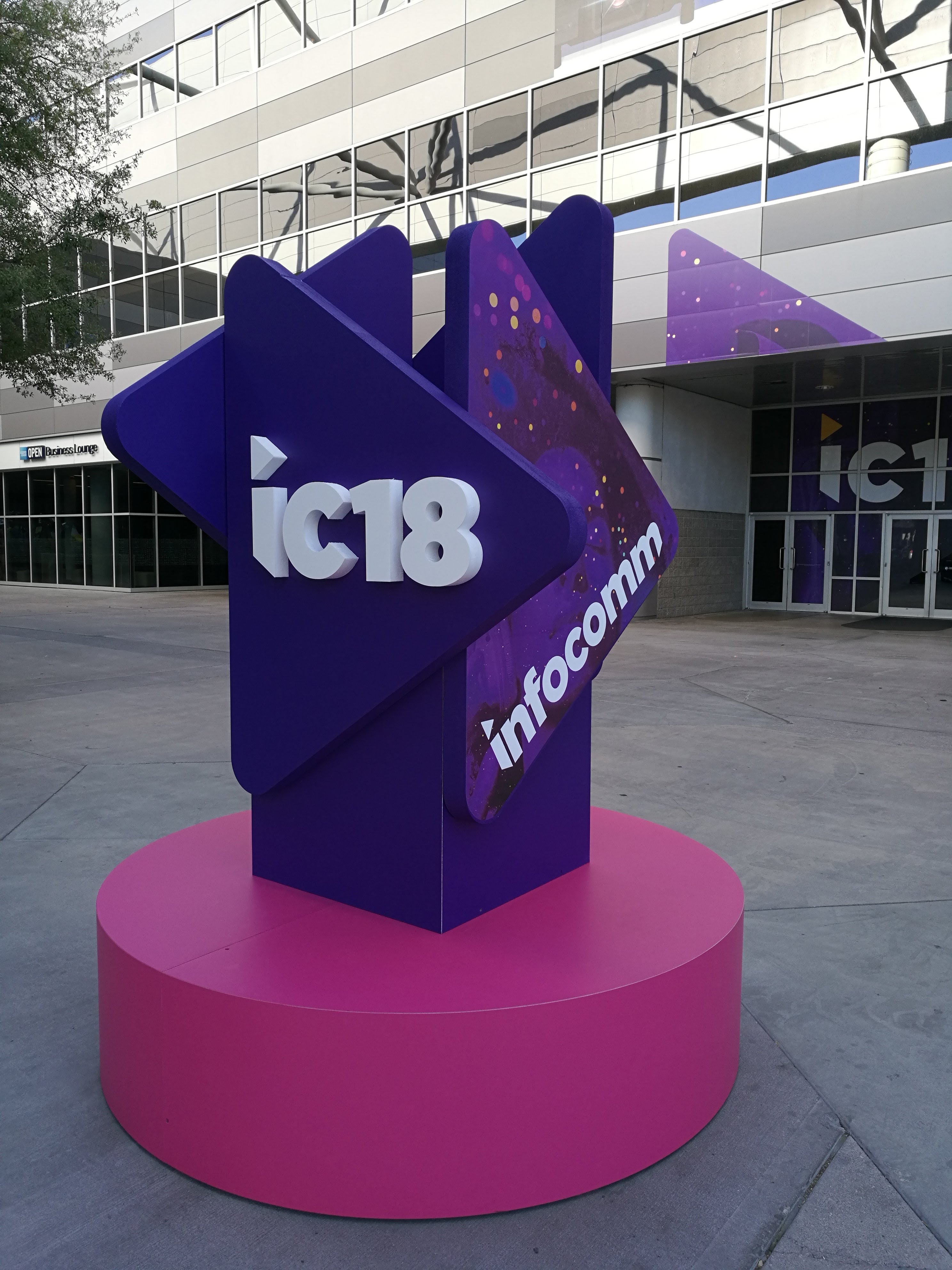
Without hesitation, yes. Approximately 60 per cent of the people that exhibit at ISE do not exhibit at InfoComm and vice versa. So, if you want to truly see what’s out there, you have to go to both. There is a significant amount of the market place that’s not participating in Europe. 77 per cent of attendees at ISE are from Europe. Four per cent of attendees at ISE are from North America. So, that’s about 1,500 people from North America. There were 43,000 people in Vegas, there’s 42,000 people you wouldn’t have met, seen and learned from unless you come to InfoComm.
It’s absolutely clear to me that you should go to both, if you don’t have to choose. It’s absolutely worth the two trips. 20 per cent of the attendance at InfoComm was from outside of North America. It’s as international as ISE is.
What can people expect from the 2019 show in Orlando?
I’m certain there will be lots of new things. We’re always looking to innovate and always working on and looking at things we can do to offer greater value to all attendees and exhibitors. You will see a continued evolution of the content piece of the show becoming more and more thought provoking. We’ll look at new formats and methods of delivering that content that creates more memorable experiences. The continued investment in the attendee experience will continue.
Everything that works now, will be enhanced. There’s no relaxing and thinking we’ve got the right formula.
Finally, would you ever consider keeping the show annually in one city rather than two?
From our perspective, there’s no temptation to do that. From the exhibitors’, we recently surveyed them on their preferences, and around 25 per cent wanted to stay in one city or the other, whilst around 50 per cent wanted to continue with the rotation. From our interpretation of that, you’re going to make 75 per cent of the people happy all the time by continuing the rotation.
From an attendee perspective, based on feedback, it’s straight down the middle. Half would never want to leave Orlando and half would never want to go back.
There are so many advantages of being in two cities. The attendees vary and a significant amount that only go to one and not the other, which creates huge opportunities and value to the exhibitors.
It would be easier for my staff to go with one city (he joked).
We’re contracted out until 2025 or 2026 and we have calendar reservation for first refusal for long beyond the time I retire, from the mid to late 2030’s.
